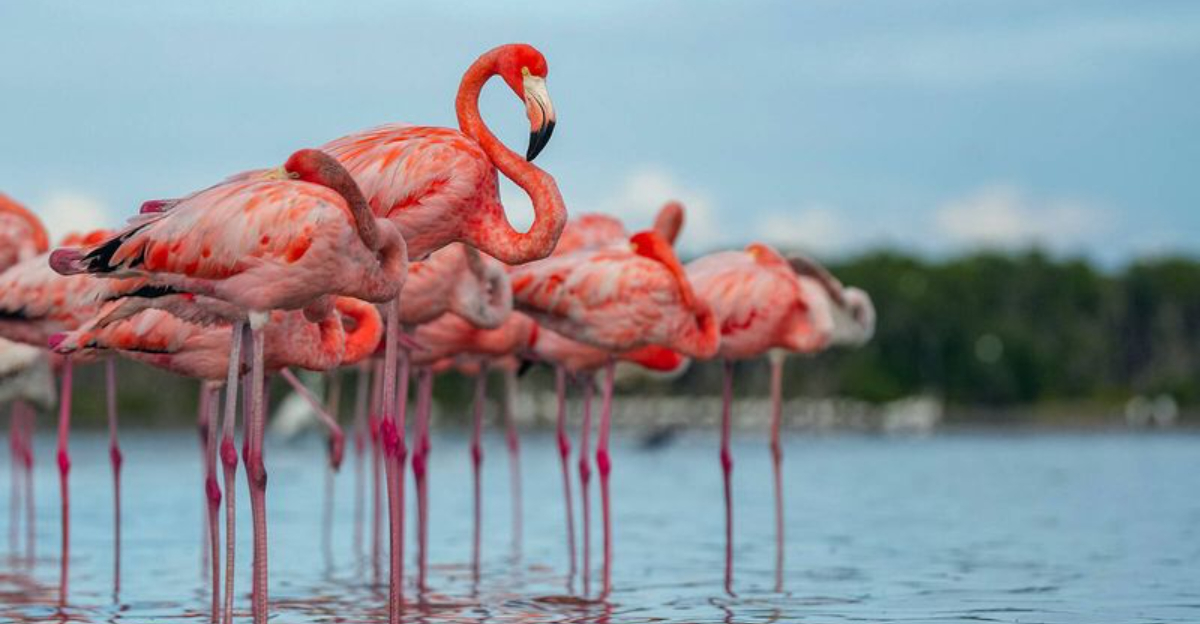Tucked away from Florida’s bustling beaches and theme park crowds lies a quiet lake with a splash of pink magic.
While most people think flamingos are just zoo residents or Caribbean icons, this hidden spot proves otherwise.
Here, these leggy, vibrant birds still touch down to nest, dance, and dazzle in the wild.
It’s a rare and beautiful reminder that even in the U.S., flamingos haven’t completely flown the coop—and nature still holds a few surprises.
1. A Secret Flamingo Haven
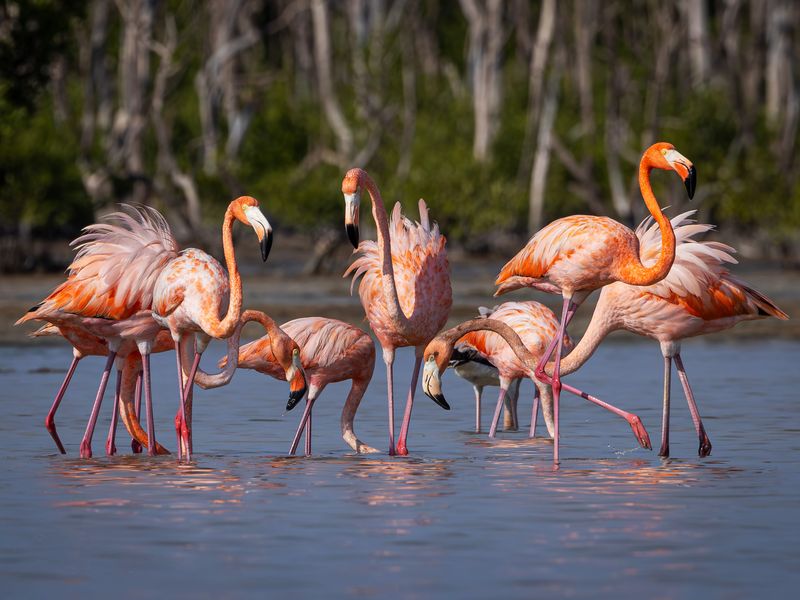
Nestled within the vast Everglades ecosystem, Lake Ingraham harbors America’s last wild flamingo colony.
These magnificent birds return year after year, drawn to the lake’s shallow, brackish waters and abundant food sources.
Conservation efforts have kept this location relatively quiet to protect these vulnerable birds from disturbance.
The flamingos create their distinctive mud-mound nests along the lake’s secluded shorelines, far from prying eyes.
2. Why These Pink Birds Choose Florida
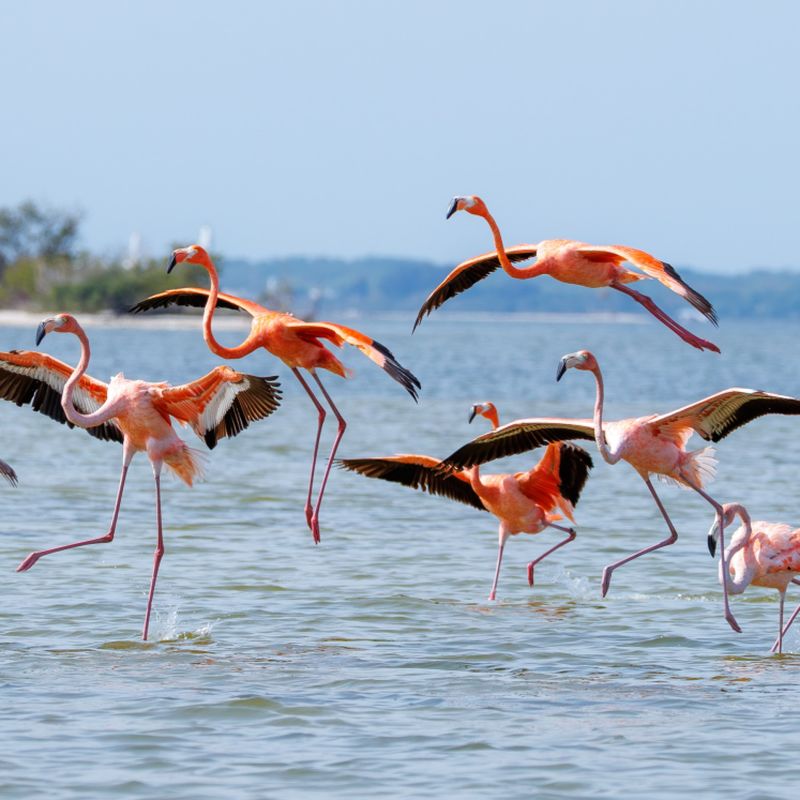
Florida’s unique combination of warm climate, protected wetlands, and rich food sources creates the perfect environment for flamingo breeding.
The lake’s algae and tiny crustaceans provide the essential diet that gives flamingos their iconic pink coloration. Hurricane patterns actually help maintain this habitat by refreshing the water chemistry.
Unlike their Caribbean cousins, these Florida flamingos have adapted to subtle seasonal changes in water levels, demonstrating remarkable resilience.
3. When to Witness the Pink Spectacle
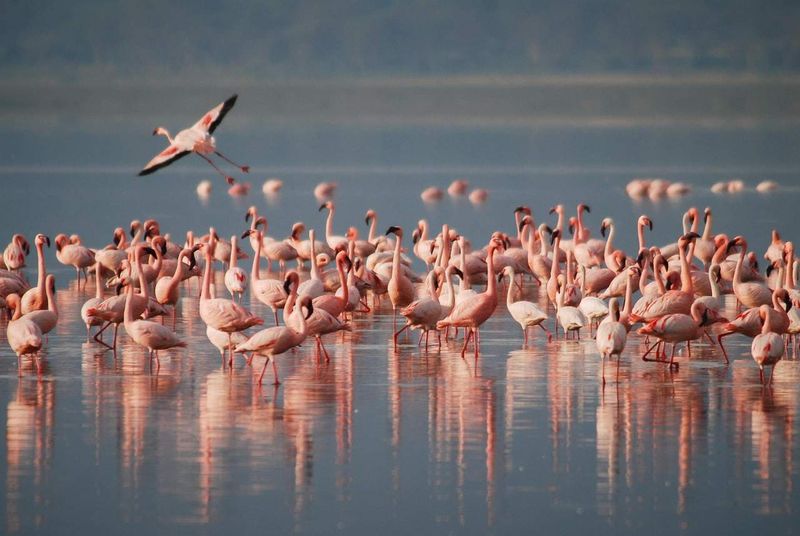
“March madness” takes on a whole new meaning at Lake Ingraham! Spring marks the beginning of flamingo nesting season, with peak activity occurring between March and June.
Early mornings offer the best viewing opportunities as the birds actively feed and perform their elaborate courtship dances.
Binoculars are absolutely essential—these shy creatures maintain a healthy distance from humans. Patient observers might witness the fascinating feeding rituals where flamingos stamp their feet to stir up food.
4. Getting There Without Disturbing Nature
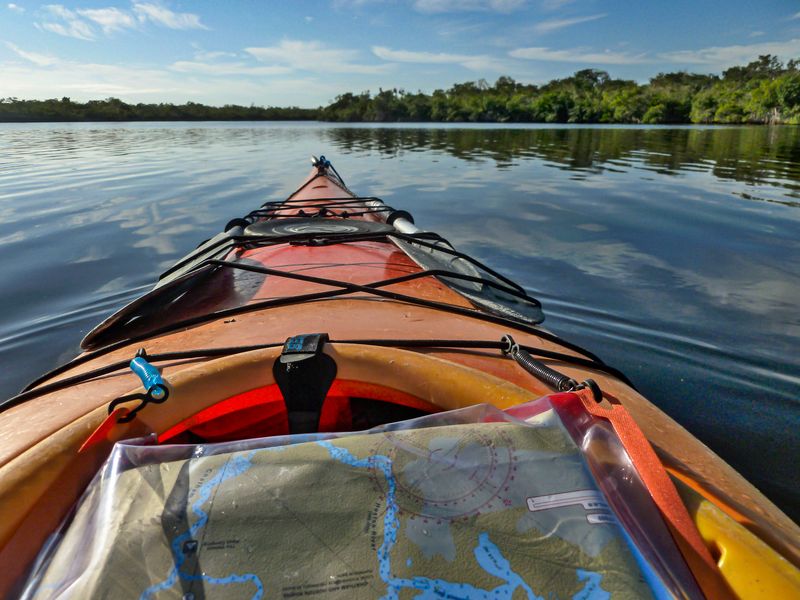
Forget the tourist crowds! Accessing this hidden gem requires determination and respect for wildlife.
Guided kayak tours led by certified Everglades naturalists offer the least intrusive viewing method, launching from Flamingo Marina in Everglades National Park.
Rangers strictly enforce viewing distances of at least 100 yards.
The journey itself becomes part of the adventure, with opportunities to spot manatees, dolphins, and countless wading birds along the way.
5. Lake Okeechobee’s Secluded Southern Shore

Nestled along the marshy southern edge of Florida’s largest freshwater lake sits an unexpected flamingo sanctuary.
Lake Okeechobee’s remote southern shoreline, with its shallow waters and abundant algae, creates the perfect conditions for these iconic pink birds.
The flamingos gather primarily in an area locals call “Pink Point,” accessible only by airboat or specialized shallow-water vessels. Rangers monitor the population closely, counting approximately 30-45 birds during peak season.
6. Not a Tourist Trap
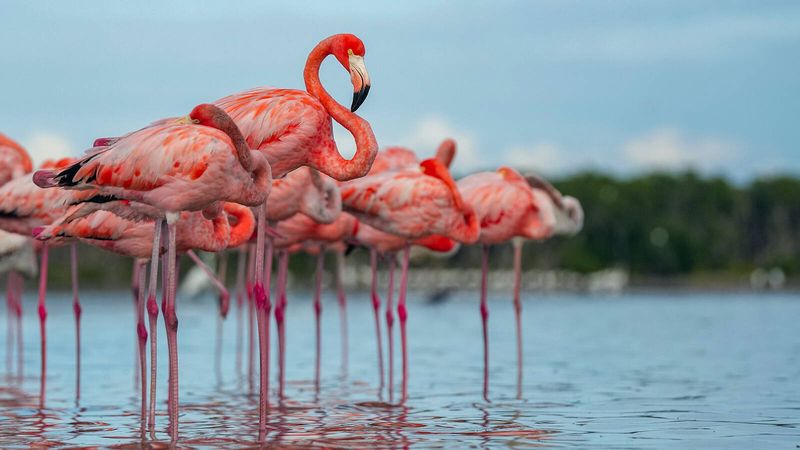
Unlike Miami’s crowded beaches or Orlando’s packed theme parks, this secluded flamingo haven remains refreshingly undeveloped.
Local conservationists have deliberately kept this wetland sanctuary off promotional materials and visitor guides.
The lake’s remote location requires determined effort to reach – think muddy access roads and potential airboat rentals.
This natural barrier has protected the flamingo colony from selfie-seekers and wildlife harassers who might disrupt crucial breeding cycles.
7. The Ongoing Mystery of American Flamingos
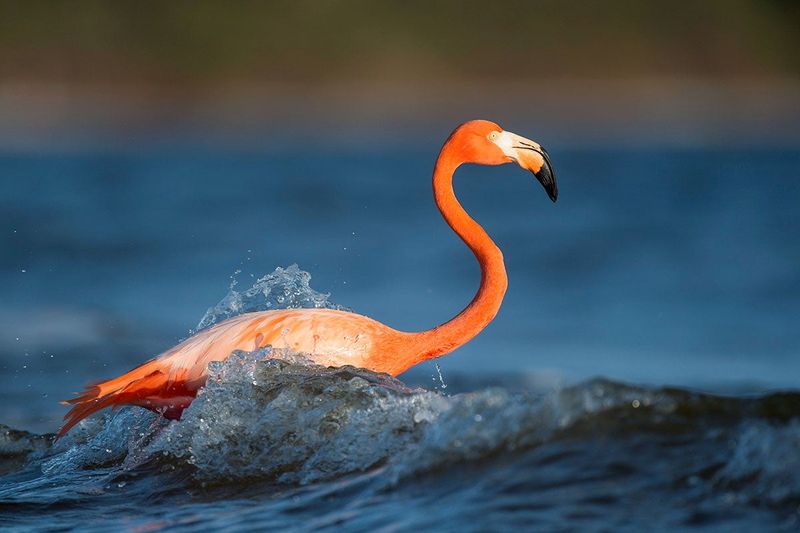
Scientific debate still swirls around these Florida flamingos! Are they truly native or descendants of escaped birds?
DNA analysis suggests they’re genetically linked to wild Caribbean populations, supporting the native species theory.
Researchers use satellite tracking to follow migration patterns, revealing surprising connections to Cuba and the Bahamas.
This overlooked lake has become ground zero for rewriting our understanding of American flamingo history and distribution.
8. Science in Action
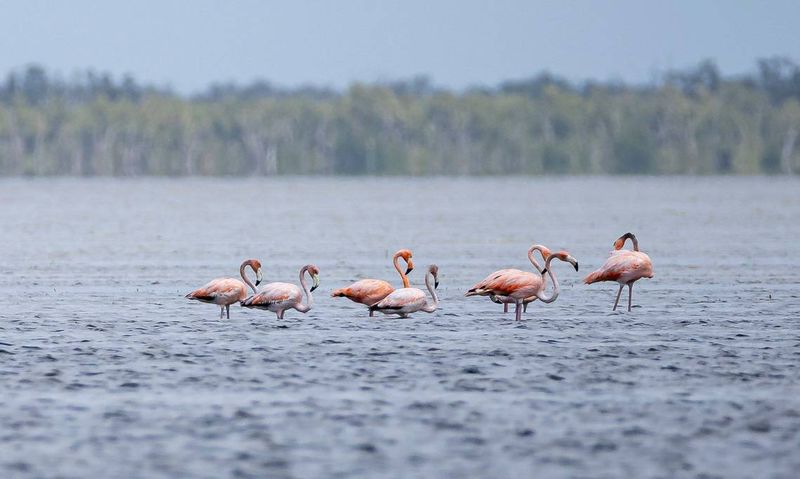
Biologists equipped with high-tech GPS trackers wade through knee-deep waters at dawn, carefully documenting the movements of Florida’s elusive flamingo population.
These dedicated scientists brave mosquito swarms and sweltering heat to collect vital data on feeding patterns, breeding behaviors, and seasonal movements.
The research reveals surprising connections between this isolated flamingo colony and Caribbean populations.
DNA analysis confirms these aren’t escaped zoo specimens but wild American flamingos that have maintained their presence for generations despite being officially declared extirpated from Florida in the early 1900s.
9. A Glimmer of Hope for U.S. Flamingos
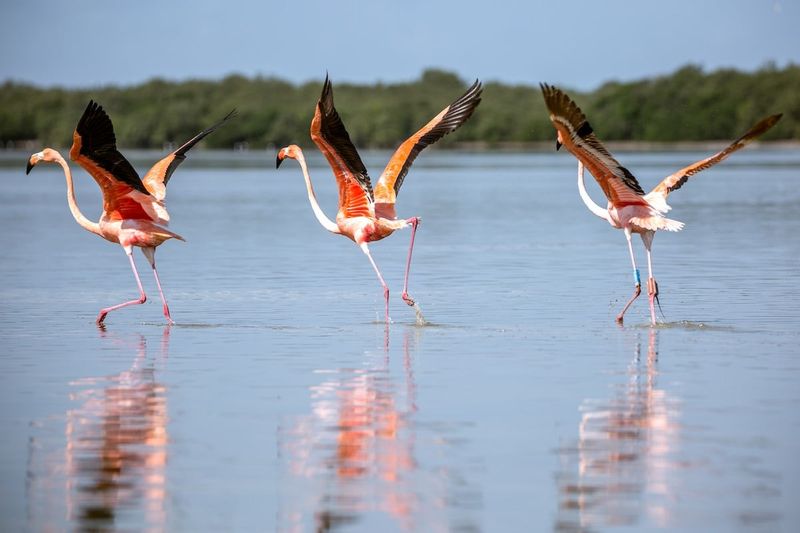
Against all odds, a small colony of American flamingos has established a fragile foothold in Lake Ingraham, a brackish water body tucked within Everglades National Park.
Once considered completely vanished from American shores due to feather hunting in the 1800s, these resilient birds began reappearing in small numbers during the 1970s.
Scientists initially debated whether they were truly wild or simply escapees from captive collections.
DNA testing and tracking studies eventually confirmed these were authentic wild flamingos, likely blown north from Cuba and the Bahamas during hurricanes.
10. Protected and Watched
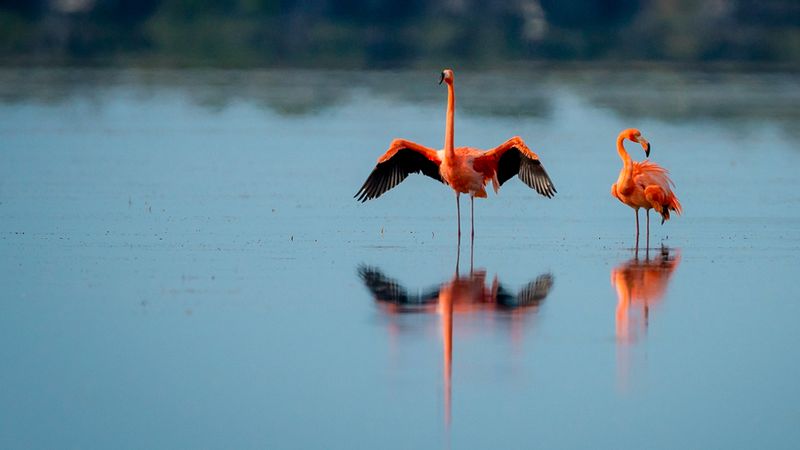
Biologists nearly fell off their airboats when they confirmed flamingo nesting at Lake Ingraham in 2018 after a 70-year absence.
These cotton-candy colored birds, once thought to be only escaped zoo specimens in Florida, proved to be wild Caribbean migrants reclaiming ancestral territory.
Park rangers now maintain a strict no-entry zone during breeding season (March-June), allowing these skittish birds space to raise their young.
